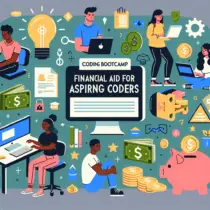Navigating the Financial Pathways for Online Learners
In today’s digital age, many people are turning to online learning to gain new skills and advance their careers. However, a common question arises: how can online learners effectively navigate the financial pathways to support their education? The answer lies in understanding the variety of financial aid options available, including scholarships, grants, and loans specifically tailored to support online learning endeavors.
For learners considering agricultural studies, resources like the "$4,000 Agriculture Advancement Grant in South Africa, 2024" provide an excellent opportunity. This grant assists students pursuing agriculture-related courses, allowing them to focus on their studies without the constant stress of financial burdens. Such financial assistance is pivotal for students who may not have the means to support their educational pursuits independently.
Online learning platforms often offer unique scholarships that cater to their students’ needs. These scholarships can alleviate some of the tuition costs and even provide additional resources like textbooks or technology needed for courses. Many institutions are recognizing the growing demand for flexible learning and are creating financial support structures to encourage more students to enroll.
One standout opportunity for those interested in advancing their education in technology or sciences is the "$13,000 Scholarships to study Master's at ETH Zurich in Switzerland, 2024/25." This scholarship is designed to support students from around the globe who choose to study at ETH Zurich, even through their online programs. By providing substantial financial aid, the scholarship makes prestigious education more accessible, regardless of the student’s financial background.
When considering financial paths for online learning, scholarships and grants are just part of the equation. Prospective students must also consider other forms of aid, such as student loans, work-study programs, and employer tuition assistance. It’s crucial for students to research and understand each option, identifying which ones best align with their educational and financial goals.
Student loans can be a viable solution for online learners who require immediate funds to cover education costs. However, they should be approached with caution and an understanding of the long-term commitment they entail. For American students, federal student loans often provide fixed interest rates and flexible repayment options that can ease the financial pressure post-graduation.
Work-study programs allow students to earn money while they learn, providing valuable experience and offsetting some of the costs related to tuition and other expenses. Many online programs incorporate virtual work-study opportunities, enabling students to work within their field of study and earn income simultaneously.
Employer tuition assistance programs present another strategic pathway. Many companies offer financial support for their employees who pursue higher education, particularly if the coursework is relevant to their job. This kind of program can reduce or even eliminate the cost of online learning, making it a wise choice for working professionals looking to upskill.
The availability of financial aid varies widely, depending on the institution and the program. Online learners must be proactive in seeking out opportunities and applying early. Many scholarships and grants have strict deadlines, and missing these can mean losing out on valuable financial support.
Additionally, students must be aware of the potential for hidden costs associated with online learning, such as technology fees or costs for specific software. Budgeting for these expenses is crucial to ensure there are no surprises that could disrupt their educational journey.
Financial literacy plays a significant role in navigating these pathways effectively. Students should have a clear understanding of managing their finances, especially when incurring debt. Tools and resources are available for students to learn about budgeting, saving, and making informed financial decisions that can impact their education and future.
For international students, exchange rate fluctuations can also affect financial planning. It’s vital to factor in these considerations and understand how they might influence the total cost of an online education program, particularly when studying abroad or enrolling in a program outside one’s home country.
Creating a solid financial plan requires a mix of resources, support, and guidance. Many educational institutions offer financial advising services that can help students explore their options and devise a strategy that covers immediate needs and long-term financial health.
In summary, the answer to navigating the financial pathways for online learners lies in being resourceful, informed, and strategic. With a variety of scholarships, grants, and financial aid options available—like the "$4,000 Agriculture Advancement Grant in South Africa, 2024" and the "$13,000 Scholarships to study Master’s at ETH Zurich in Switzerland, 2024/25"—students have numerous opportunities to make their online education dreams a reality without the undue financial burden.






